

Greg Wilcox' "Did YOU Know?" will be your ticket to all that has been hidden from you in the vast universe of video gaming. Whether it be titles released in distant lands, gems that were snubbed by attempts to bring it to the public eye, or simply games your mother told you you couldn't play, Greg is on the case to shine a big bright spotlight on all of the dark corners of gaming.
|
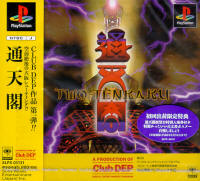 |
Depending on whom you ask, the arcade shooter genre can be seen as something that’s alive and thriving, dead and buried, hibernating until it’s revived by newly reverent masses who’ve finally realized what they’re missing, or it just never took off in the first place. No matter where you stand, it’s probably safe to say that the first console that springs to mind when the subject turns to shmups isn’t the PlayStation. Granted, Sony’s US arm hasn’t done all that much to keep the genre (and most other 2D styles of gaming) alive, but a quick trip overseas shows a surprising range of games available to the determined player/collector. A few of the games listed here are exclusive to the console, and some are arcade or console ports that made it to the system before appearing on the more technically capable (in terms of 2D) Sega Saturn. Interestingly enough, once you begin to track down some of the 2D games you’ll almost surely gravitate to a few curious peeks at the 3D shooters. This is due to some of these being decent arcade ports or original titles that feature some really striking cover artwork. Of course, some of those are featured here as well. One of the launch titles for the Japanese PS (12/3/94, by the way) was Konami’s Gojukou Parodius Deluxe Pack, which contained ports of the two arcade games, Parodius, and Parodius Da!. Konami also ended up doing a number of its classic shooters like Gradius Deluxe Pack, Detana Twinbee Yahoo! Deluxe Pack, Salamander Deluxe Pack, Sexy Parodius, and Jikkyou Oshaberi Parodius: Forever With Me, making welcome appearances. While most of these also ended up on the Saturn, 1997’s Gradius Gaiden was created especially for the PS One and ended up being arguably the best game in the series for a 32-bit console. The game had a few all-new play mechanics, dazzling visuals, and was the first Gradius game that enabled two-player simultaneous shooting action. All of the Konami shooters have gotten budget re-releases over the years, so if you’re looking to expand your horizons on a thin wallet you’ll probably find it easier to collect these as “Best” editions. Now if only someone could convince them that PS2 collections of all the Gradius, Parodius, and Salamander games could sell here, the world would be a happier, Gofer-free place. 1995 was an interesting year for the console as a number of shooters of varying quality were released. All of them are essential in some way in that they’re either spectacularly good or notoriously awful, depending on whom you talk to. Sony’s own Philosoma was a unique big-budget shooter that featured 2-D and 3-D gameplay views, long and very amazing CG movies between stages, and a quick, slightly deceptive TV ad that ran in Japan. It showed brief clips of CG footage from the game, while an announcer stated (in English): “This isn’t a movie… it’s a SHOOTING GAME!”. The ad was partly right, but if the commercial told you “This isn’t a movie…it’s computer generated movie footage from a stage intro to a SHOOTING GAME that’s actually a throwback to classic arcade shooters with a modern twist!”, gamers in Japan would have fallen asleep before the commercial was over. Philosoma was localized rather quickly for the US market and was named “Shooter of the Year” by the EGM Buyer’s Guide in late 1995. Given that the competition on the console was slim, it’s easy to see why. On the other hand, there were games like Club Dep’s Two-Ten Kaku, and Stahlfeder, by Santos, who seemed undeterred by that game’s poor reviews as they went on to create another shooter called Airgrave that was pretty much the same game as Stahlfeder but with more futuristic looking playable ships. Both Santos games are sort of rare, but don’t run out and buy them expecting the second coming of Radiant Silvergun. In the case of Two-Ten Kaku, if you play the game with all 3 different ships you’ll feels as if the developer spent so much time creating the expensive cinemas that they forgot that they were supposed to deliver a playable game and threw something together over a weekend. The results are quite surreal, with some really strange-looking bosses and weapon effects, and music that’ll make your ears scream. If you want a better game with a really long cinema at the beginning (and lots of in-game techno music to boot), just grab a copy of Capcom’s X2: No Relief, a 1997 shooter by the folks behind the Worms games, Team 17. Probably the most bizarre shooter released that year was Masaya’s Choaniki: Kyukyoku Muteki Ginga Saikyo Otoko, or: Super Big Brother: The Galaxy’s Most Invincible Strongest Man. In case you didn’t know already, Choaniki is a series of homoerotic themed shooters with a different game on the PS One, Saturn, PC-Engine CD, and more recently, PlayStation 2. There’s also a Super Famicom fighter, and a Wonderswan RPG, if you’re buy-curious (ba dum bum!). Although they’re not that good as shooters, the Choaniki games all seem to have somewhat of a cult following, and the PS One version was reprinted not to long ago with a much better cover than the original. Since you’re about to ask, I’ll admit to owning all of them except for the Wonderswan game (as I just found out about it while researching this column). Amusingly, every once in a while a US game magazine will trot out a Choaniki reference, but I’d bet the farm that few of those folks using the games as filler material probably haven’t experienced them just yet. In a way, it’s too bad Masaya never made an arcade version of any of these games. It would have been quite interesting to see an “upright” Choaniki cabinet for sale on Ebay (ba dum bum, psssh!). Speaking of arcade cabinets, there was a 1995 port of Taito’s classic psuedo-3D shooter Night Striker done for the PS, and it’s actually quite good, with the exception of the slight loading pause between stage transitions. It’s far better than the pixely Mega-CD port done a few years previously, but the later Saturn version, Night Striker S, trumps this one just a bit more. Still, you get a double duty disc with all three versions as you can pop any of them into your CD player and hear one of Zuntata’s best arcade scores. Taito’s seminal classic Space Invaders also got a few perfect ports on the PS in 1997, 1998, and 2001 (as a budget game), but Bandai cleverly borrowed the license for the 1995 PS game PD Ultraman Invaders, which featured the TV hero in an over too quick shooting action game. Bandai also borrowed Namco’s Galaxian license for another fun quickie, SD Gundam Over Galaxian, a retelling of the Year One War series with very familiar gameplay. The cool thing about the game is the changeable viewpoint, which went from classic Galaxian style to a first person view. There was also a second game on the disc based on the G-Changer show, which is a good thing, as both games can be finished in about an hour total if you skip the cinemas. Then again, the replay value is definitely there, as you’ll most likely bring this one out when friends come over just because it’s charming and cool at the same time. If you’re interested in value for the money (and don’t mind doing a bit of work in the process), you may want to grab both Dezaemon Plus and Dezaemon Kids, Athena’s two make it yourself shooters. Plus is the more intensive of the two, as far as the creation aspect goes, but it has a few original shooters on the disc as well so you can play what’s there and make yours as good or better. Dezaemon Kids has about 100 user-created shooters on it, plus a simpler creation tool, as the game was geared toward younger Japanese players. You’ll probably need to learn some simple Japanese commands in order to use the creation tools, but even if you don’t, there’s still an incredible amount of gameplay for shmuppers everywhere. If you want to dabble in a bit of polygon pushing, 3D Shooting Tsukuru is a fun way to create some simple yet challenging mini masterpieces. These three games aren’t usually very expensive at all if you’re looking to import them, and sometimes they’ll be listed categories other than shooting in some places. There are a few games that combine arcade shooting and other styles of gameplay but aren’t considered “shooters” in the traditional sense by some purists. Still, it’s worth looking up side scrollers like Media Vision’s Treasure-inspired Gunners Heaven, mech-based action shooters like Wolf Fang, or anime based titles like Simple Characters Volume 8: Gatchaman The Shooting, or Bokanto Ippatsu! Doronbo: Time Bokan Shirizu among others. Diehard shmup fans may have already heard of or played the following games, but I’m going to mention them here just in case you’ve avoided the PS for some reason, or haven’t yet picked a few of these because some are prohibitively expensive. One of the most fun and adorable shooters on the console has to be Sky Think System’s 1997 release, Harmful Park. This is a colorful side scroller that’s deceptively cute and furiously difficult on the hardest mode, yet the easier settings make it accessible to just about anyone. Besides the simple background cheat the programmers used to get loads of moving 2D objects onscreen, Harmful Park is also known for its 3 mini-games, Punch Ball, Sky Circuit, and Tank Battle. Each of these seems to be derived from classic arcade or console games and as the PS One only has two controller ports you’ll need to whip out the multi-tap to play the Combat-inspired 4-player Tank Battle. Another cute shmup, Media Entertainment’s Kyuin, features kids on flying vacuums taking on various goofy enemies. This got a re-release not too long ago, but I prefer the cover art on the original issue. Everyone’s favorite flying witch, Sunsoft’s Cotton, has shown up twice on the PS with Fantastic Night Dreams: Cotton Original, and Marchen Adventure Cotton 100%, both ports of older console titles. The original pressing of Cotton Original is a bit pricey, but both games are available as budget games. Before you go batty looking for an “original” pressing of Cotton 100%, it was only done as a SuperLite 1500 budget game on the PS, so don’t go and pay a king’s ransom for it just yet. Actually, a number of shooters previously out of the range of most folks wanting to import have been re-issued by publishers like Major Wave, Hamster, D3 Publisher, and other Japanese companies. So games like The Raiden Project, the incredible Raiden DX, Donpachi, Geki-oh Shienryu, Sokyu-gerentai Oubushushtugeki, Sonic Wings Special, Sol Divide, and many others are within reach, especially if you buy them from direct sellers online rather than rely on auction sites. Don’t let the low prices scare you off unless you see something like Victory’s horrid TRL- The Rail Loaders smiling and waving at you as you whip out your wallet to pick it up cheaply. If however you’ve got a wad of cash to spare, Techno Soleil’s Gaia Seed: Project Seed Trap is one of those games to go a-hunting for. The cover of this 1996 release makes it look almost like a console role-playing game, and the price for a used, complete one ranges from around 70-90 dollars or more. Taito’s version of Darius Gaiden (not to be confused with G-Darius) isn’t cheap either, but it’s usually a bit more reasonable. Toaplan Shooting Battle #1, a collection of 3 2D classics (Kyuukoku Tiger, Tiger-Heli, and Twin Cobra) is another one that’s tricky to track down cheap, as is the PS port of DoDonPachi. Hands down, two of the best exclusives are Compile’s Zanac X Zanac and 70’s Robot Anime Geppy-X, by a company called Aroma. Zanac X Zanac contains 4 versions of the original Zanac and an enhanced remake, Zanac Neo that features some incredible visuals and the same addictive gameplay as the original game. During the game’s 2001 release, Compile ran a website that feature among other things, a history of all their shooting games that was a great source of information for those looking to discover some really stellar games. Geppy-X is a whopping 4 discs, each one loaded with cinemas and fun side-scrolling action that almost makes you feel like you’re part of an interactive anime. It’s not the greatest shooter ever, but if you grew up watching enough classic anime, you’ll definitely get a case of the warm and fuzzies all over. Some costly licensed action/shooting games, like the Macross Plus: Game Edition (another PS exclusive) and Super Dimension Fortress Macross: Do You Remember, Love? are worth a look even if you’re a diehard fan of 2D shooters, as both games really makes good use of the license. There are also not so hot Macross games like Macross Digital Mission VF-X and Macross VF-X 2 (which was this close to a US release until either Bandai realized how poor it really was or Sony turned it down for quality issues), but only go near these if you’re a super-dedicated fan of the show who wants everything. Another so-so Bandai licensed 3D shooter, Cowboy Bebop, is in demand in both its regular and reissue versions because of the popularity of the show here and also because the cover art on both versions is just really damn good. Now that you’re hung up on a polygon, we may as well venture down the corridor for a bit and look at some other 3D space shooters. Sure, there are some pretty poor games you’ll want to avoid, but for every EOS: Edge of Skyhigh, Galeoz, and Galaxian 3, you’ll come across something that’s just plain fun like Daiei Digital and TYO’s Gamera 2000, nousite, inc.’s Lattice 200EC7, or Ascii’s story-driven Extra Bright. While its Galaxian 3 wasn’t all that hot a sequel, Namco’s Star Ixiom was a heck of a lot better than its predecessor Starblade α, as it added a bit more of a plot and had much more interesting visuals and gameplay. Finally, There are hybrid shooter rarities like Cryo’s Hard Boiled (yup, based on the Frank Miller/Geoff Darrow comic), Mathilda’s (Screaming Mad George’s) Paranoiascape, and Cyber Tech Design’s The Operation Death Wing that rarely turn up in the wild. I’ve never seen these three games available from my usual sources, but should you run across them or A.D.M’s Meta-Ph-List Gamma X 2297, feel free to contact me and let me know just what I’m missing. Speaking of missing, even games that have been localized for US audiences have some minor elements clipped during the process. The import version of Omega Boost has better intro music (it sounds almost like a Queen song), and Astro Trooper Vanark (released here as simply Vanark) has a brief snippet of a nude female character in a shower early in the game. Now that you’re all hot and bothered, you may want to grab your copy of positron’s iS: Internal Section, Squaresoft’s Tempest-inspired 3D shooter (and precursor to Rez), and blast away some of those tensions (no need for a Trance Vibrator, folks). While the shooter as a genre as a whole is pretty much deceased on the PS One in terms of recent offerings, there’s been a major resurgence on the PS2, thanks to D3 Publisher and other companies’ budget releases and re-releases. That’s fodder for another future column, as the wide variety of games available for $20 and under on the Japanese PS2 is growing faster than a Chia Pet soaked in Miracle Gro, and yours truly just can’t keep up with them all. Next time, however, we’ll probably take a look at a couple of fighting games that you may have happened to overlook. |
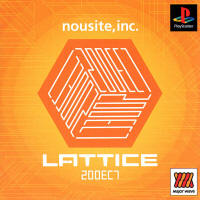 |
 |
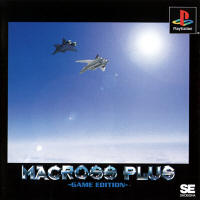 |
|
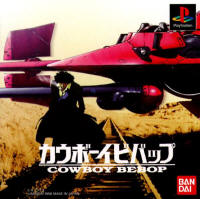 |
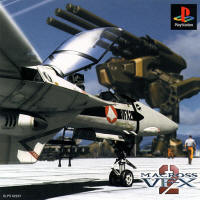 |
|
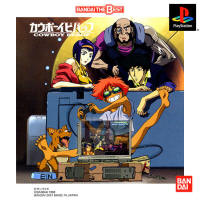 |
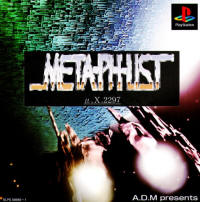 |
|
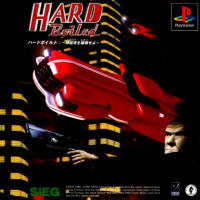 |
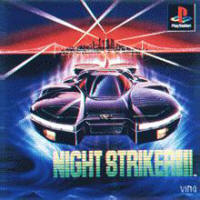 |
|
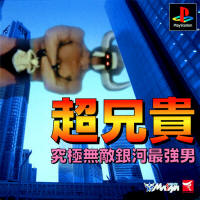 |
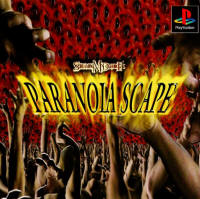 |
|
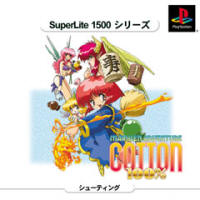 |
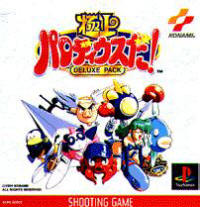 |
|
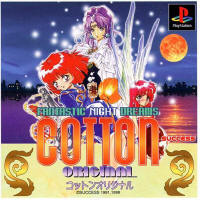 |
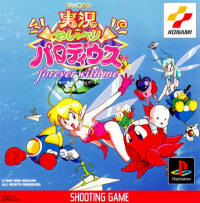 |
|
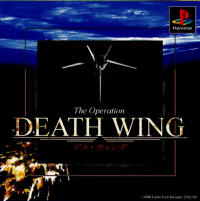 |
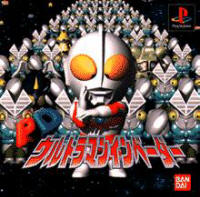 |
|
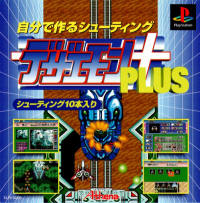 |
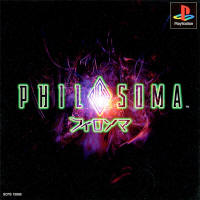 |
|
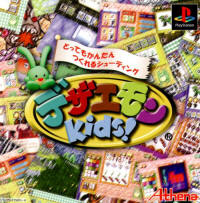 |
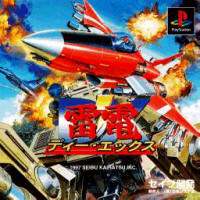 |
|
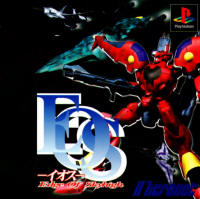 |
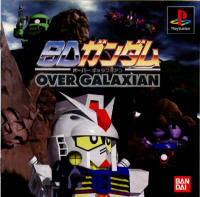 |
|
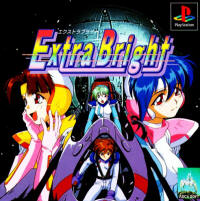 |
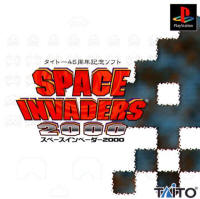 |
|
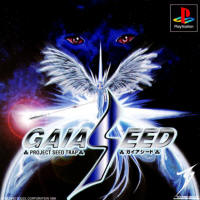 |
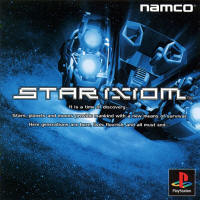 |
|
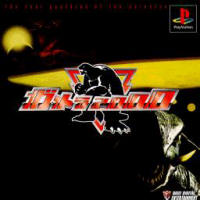 |
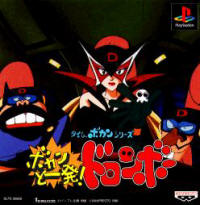 |
|
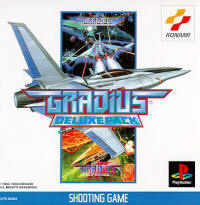 |
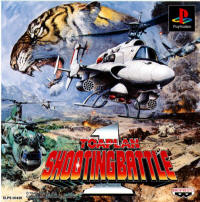 |
|
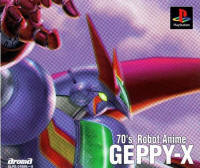 |
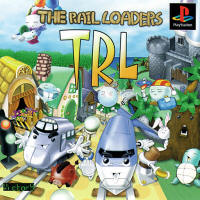 |
|
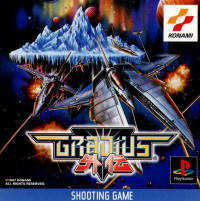 |
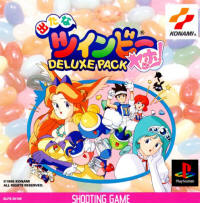 |
|
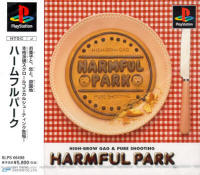 |
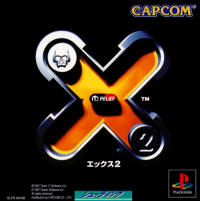 |
|
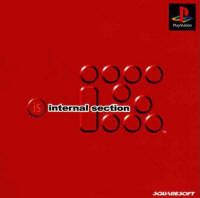 |
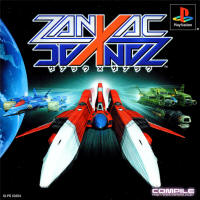 |
|
| Now that you’ve gone completely broke tracking down all those games, all you really need to do now is set aside time to play them. Tell you what: I’ll give you two months to cram as much playtime in as you can. That’s when I’ll be back with a few 2D shooters you may or may not have heard of… | ||
A new Did YOU Know? can be found here bi-monthly!
For "back issues" of this column, click HERE.